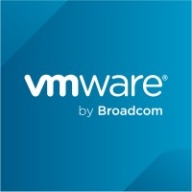

VMware Cloud Director and IBM Turbonomic compete in the cloud management and optimization space. Based on feature comparison, VMware Cloud Director shows a clearer edge in security and flexibility, though IBM Turbonomic provides significant benefits in real-time performance optimization and resource allocation.
Features: VMware Cloud Director is known for robust security, ease of scalability, and flexibility in virtual data center deployment. It supports advanced automation and self-service capabilities for enterprise environments. IBM Turbonomic focuses on real-time performance optimization, efficient resource allocation, and capacity planning, offering strong support for predictive analytics across cloud environments.
Room for Improvement: VMware Cloud Director could benefit from improved third-party cloud service integration, enhanced ease of use through simplified installation, and better hybrid cloud support. IBM Turbonomic might focus on updating its interface, strengthening reporting capabilities, and reducing the complexity of policy creation for broader automation.
Ease of Deployment and Customer Service: VMware Cloud Director shows versatility in both private and public cloud environments, providing strong customer support, though experiences can vary with complex issues. IBM Turbonomic offers primarily on-premises deployment with consistent customer service satisfaction, though public cloud integration efforts may require additional attention.
Pricing and ROI: VMware Cloud Director is often seen as expensive, with a cost structure appealing to larger enterprises, while taking time to achieve ROI due to high initial investments. IBM Turbonomic provides competitive pricing with a flexible licensing model, promising quicker ROI by optimizing resources without large hardware investments.
Most of the time, we have to raise the case with the vendors such as HPE or other providers, but in case of VMware Cloud Director or any other VMware product, 70-80% of problems we can easily troubleshoot by leveraging public documentation and the available KB articles.
VMware Cloud Director is quite scalable; I would rate it nine out of ten.
I would rate scalability for VMware Cloud Director as 8, especially from the on-premises environment.
There are occasional problems when trying to increase the parameters of a virtual machine.
Cross-cloud migration refers to if a customer has something on Azure, wanting to bring it up on VMware or maybe from VMware to AWS, vice versa.
The console methods make management difficult until VMware tools are installed.
The pricing for VMware Cloud Director is more or less reasonable, especially when compared to Cisco, which is significantly more expensive.
From a pricing perspective, I would rate VMware Cloud Director as 7 because being the available feature set, Broadcom always offered more price compared to another product.
The most valuable feature of VMware Cloud Director is segregating the underlying infrastructure for the end user.
A notable feature is the Independent Disk, which allows detaching a virtual drive from one virtual machine and attaching it to another, enabling more flexibility in operations.
| Product | Market Share (%) |
|---|---|
| VMware Cloud Director | 5.4% |
| IBM Turbonomic | 4.9% |
| Other | 89.7% |


| Company Size | Count |
|---|---|
| Small Business | 41 |
| Midsize Enterprise | 57 |
| Large Enterprise | 147 |
| Company Size | Count |
|---|---|
| Small Business | 24 |
| Midsize Enterprise | 11 |
| Large Enterprise | 36 |
IBM Turbonomic offers automation, planning, and right-sizing recommendations to streamline resource management, improve efficiencies, and optimize costs across virtualized environments and cloud platforms.
IBM Turbonomic is valued for its capability to optimize resource allocation and monitor virtual environments efficiently. It facilitates automated decision-making in VM sizing, load balancing, and cost optimization for both on-premises and cloud deployments. Users can leverage insights for workload placement, ensure peak performance assurance, and effectively right-size across VMware and Azure. The ongoing transition to HTML5 aims to improve visual and navigational ease, while expanded reporting features are anticipated. Opportunities for improved training, documentation, and integrations enhance platform usability and functionality.
What Are the Key Features?In finance, IBM Turbonomic aids in maintaining platform efficiency during market fluctuations. Healthcare organizations leverage its capability for resource optimization during high-demand periods to enhance patient care support. Retailers use it for planning in peak seasons, ensuring resources align with fluctuating demand to maintain performance continuity.
VMware Cloud Director, also known as vCloud Director, is a cloud management tool that offers secure, flexible, and efficient cloud resources to thousands of enterprises and IT teams across the world. The solution serves as one of the leading cloud service-delivery platforms for businesses that want to manage and operate their services effectively. By deploying this solution, companies can benefit from virtualized networking, computing, security, and storage. These benefits can be received in a timely manner, as the infrastructure of the product is operationally ready within minutes and clients do not need to install and configure physical infrastructure.
One of the biggest advantages of vCloud Director is that it allows users to build cloud-ready applications. In several ways, it facilitates the process for developers, including:
vCloud Director Features
This VMware product has various features through which users can virtualize their data and benefit from quality management solutions. Among the popular capabilities of vCloud Director are:
vCloud Director Benefits
VMware vCloud Director offers various benefits to its users. Some of these include:
Reviews from Real Users
Ajit Y., a cloud architect at a computer software company, likes VMware vCloud Director because it is a stable, truly multitenant software and the go-to tool for infrastructure as a service.
Kashif F., a divisional engineer at National Telecom Corporatio, rates vCloud Director highly because the product can be used for infrastructure provisioning without using a platform service.
We monitor all Cloud Management reviews to prevent fraudulent reviews and keep review quality high. We do not post reviews by company employees or direct competitors. We validate each review for authenticity via cross-reference with LinkedIn, and personal follow-up with the reviewer when necessary.